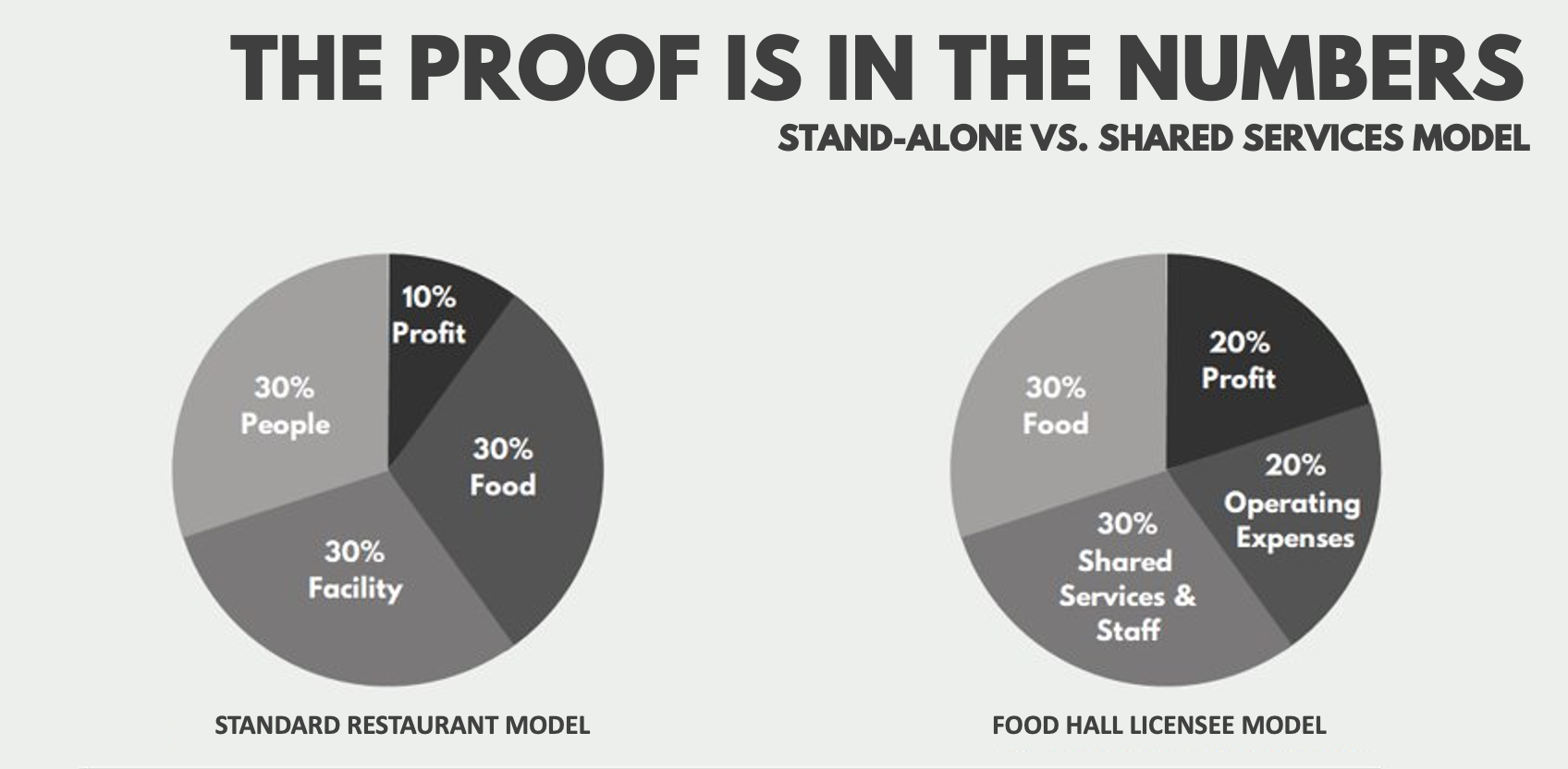Even in pre-pandemic times, restaurants in Sonoma County and across the nation were facing staffing shortages and re-examining their business models.
Start-up and marketing costs for a stand-alone brick and mortar can be prohibitive, and the increasing cost of labor can easily make business unsustainable. Although talented and passionate, chefs may not have the expertise needed to start and run a successful business. The costs associated with marketing can be exorbitant. In addition, generating new business can take an immense amount of effort.
The “Independent Restaurant” has revealed itself as one of the enterprises most vulnerable to the challenges of this [COVID-19] crisis; both because of the obvious impact of shutdowns and social distancing, but less obvious, because the traditional independent restaurant financial model was flawed to begin with.*
The low cost to staff 350 SF of space and a condensed menu allows vendors to work economies of scale. This low-cost alternative also has significantly higher profit margins, typically between 15-20% for the vendor compared to restaurants which often struggle to reach 10% profit.*
Large swaths of the independent restaurant community are going to need a rebuilding mechanism; one with lower inherent risks for all, a better operational model that allows for higher profit margins, and low barrier-to-entry. Food halls will be where the industry rebuilds first.*
The Livery on Main addresses many of the obstacles that small restaurant operators come up against by boosting the cost-effectiveness of the food hall with Farm to Coast Collective’s unique shared services model. Restaurant licensees will pay one fee for marketing, back of the house services, HR support, purchasing, and more.
Learn more about investing in our restaurant licensees on our Wefunder site.
*Source: Cushman & Wakefield The Food Hall Model, Independent F&B’s Pathway to Post-COVID-19 Profitability
